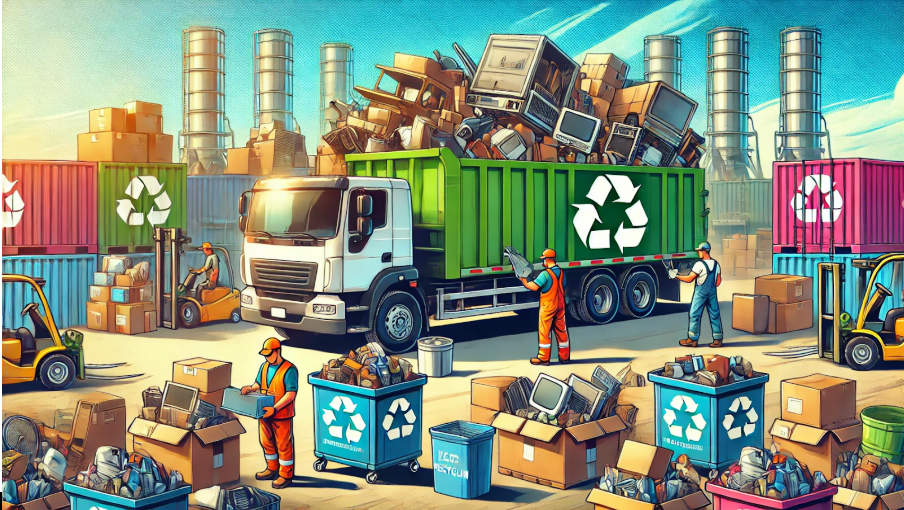
Recycling Unwanted Items: A Complete Guide to Responsible Disposal
We all accumulate things we don’t need—whether it’s old electronics,
broken furniture, or worn-out clothes. But instead of sending everything to the landfill, there’s a better, more eco-friendly solution:
recycling unwanted items. Recycling not only helps keep our planet clean but also conserves resources, reduces pollution, and supports local communities. In this guide, we’ll explore how to recycle unwanted items responsibly and provide tips on how you can make a difference.
Why Recycling Unwanted Items Is Important
1. Reduces Landfill Waste
Landfills are overflowing with items that could have been recycled or repurposed. By recycling, we reduce the strain on these waste sites and minimize the environmental impact.
2. Conserves Natural Resources
Many items, like electronics and metals, contain valuable materials that can be reused. Recycling these items conserves resources like metals, glass, and plastics, reducing the need for raw materials.
3. Decreases Pollution
Improper disposal of items, especially electronics, can release harmful chemicals into the environment. Recycling helps prevent soil and water contamination.
4. Supports a Circular Economy
Recycling promotes a circular economy where products are reused and repurposed, reducing the demand for new raw materials and lowering carbon footprints.
Types of Unwanted Items That Can Be Recycled
| Item Type | Examples | Where to Recycle |
|---|---|---|
| Electronics (E-Waste) | Phones, laptops, TVs | Electronics stores, e-waste recycling centers |
| Metals | Aluminum cans, scrap metal | Local scrap yards, recycling centers |
| Plastics | Bottles, containers | Curbside recycling, drop-off points |
| Paper and Cardboard | Newspapers, boxes | Curbside recycling, local facilities |
| Glass | Jars, bottles | Curbside recycling, glass drop-off locations |
| Clothing and Textiles | Old clothes, towels, linens | Donation centers, textile recycling programs |
Step-by-Step Guide to Recycling Unwanted Items
Step 1: Assess and Sort Your Items
Before recycling, go through your belongings to identify what can be recycled, donated, or repurposed. This step will help you organize your disposal process more efficiently.
- Create categories: Separate items into recyclables, donations, and general trash.
- Check labels: Look for recycling symbols on plastic containers, electronics, and packaging.
Step 2: Find Local Recycling Programs
Different materials require different recycling methods. Research local facilities that accept specific items, such as electronics, batteries, and clothing.
- Electronics stores: Many big-box retailers like Best Buy and Staples have e-waste recycling programs.
- Community recycling centers: Check your city’s website for information on recycling drop-off locations.
Step 3: Donate Usable Items
Not everything needs to be recycled—some items can be reused by others. Consider donating gently used items to local charities, shelters, or thrift stores.
- Where to donate:
- Goodwill and Salvation Army
- Local women’s shelters
- Habitat for Humanity ReStores
Step 4: Repurpose and Upcycle Items
Get creative and find new uses for old items. Repurposing is a great way to reduce waste while adding a personal touch to your home.
- Ideas for repurposing:
- Turn old glass jars into storage containers or planters.
- Repurpose old t-shirts into cleaning rags.
- Use wooden pallets to create garden furniture.
The Benefits of Partnering with Professional Junk Removal Services
If you have large amounts of junk or heavy items, consider hiring a professional junk removal service that prioritizes eco-friendly disposal.
Why Hire a Junk Removal Service?
- Convenience: They handle the heavy lifting, sorting, and disposal for you.
- Proper Disposal: Professional services ensure items are recycled or donated whenever possible.
- Time-Saving: Ideal for large projects, such as home renovations or moving out.
FAQs on Recycling Unwanted Items
Q1: What should I do with old electronics?
E-waste should never be thrown in the trash due to its toxic components. Instead, take it to an electronics recycling center or a retailer with a take-back program.
Q2: Can all plastics be recycled?
Not all plastics are recyclable. Check the recycling code on the item—plastics labeled with codes #1 and #2 are widely accepted, while others may not be accepted by curbside programs.
Q3: How can I recycle clothing and textiles?
Don’t throw old clothes in the trash. Many organizations accept textiles for recycling, and some retailers have take-back programs for used clothing.
Q4: Can broken furniture be recycled?
Wooden furniture can often be recycled or repurposed. For upholstered or composite items, consider hiring a junk removal service that can handle specialty disposal.
Quick & Reliable
We are available by phone or email
CITIES WE SERVICE
Benton, LA
Minden, LA
SERVICES
All Rights Reserved | LEFTOVERS Junk Hauling & Roll-Off Dumpsters
